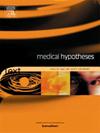The potential mechanisms of pain relief in patients after percutaneous vertebroplasty: Intravertebral pressure release and peripheral nerve ablation
IF 2.1
4区 医学
Q3 MEDICINE, RESEARCH & EXPERIMENTAL
引用次数: 0
Abstract
Percutaneous vertebroplasty (PVP) is a minimally invasive procedure widely used for the treatment of osteoporotic vertebral compression fractures (OVCFs). Despite its widespread application, the exact mechanisms underlying the pain relief observed after PVP remain unclear. Based on an extensive review of the current literature, we propose two potential mechanisms for pain relief after PVP: intravertebral pressure release and peripheral nerve ablation. High intravertebral pressures recorded in fractured vertebrae suggest a potential role in pain generation, which may be relieved by the injection of bone cement facilitating pressure reduction and stabilization. Additionally, the thermal and chemical properties of bone cement may contribute to peripheral nerve ablation, interrupting pain signaling pathways. These mechanisms are supported by evidence from biomechanical studies, histopathological examinations, and clinical observations. This hypothesis aims to provide a more comprehensive understanding of the pain relief achieved after PVP, facilitating future research and optimization of the procedure.
经皮椎体成形术后疼痛缓解的潜在机制:椎体内压力释放和周围神经消融
经皮椎体成形术(PVP)是一种微创手术,广泛用于治疗骨质疏松性椎体压缩性骨折(ovcf)。尽管其广泛应用,但PVP后观察到的疼痛缓解的确切机制尚不清楚。基于对当前文献的广泛回顾,我们提出了PVP后疼痛缓解的两种潜在机制:椎内压力释放和周围神经消融。骨折椎体记录的高椎内压力提示疼痛产生的潜在作用,可以通过注射骨水泥促进压力降低和稳定来缓解。此外,骨水泥的热和化学性质可能导致周围神经消融,中断疼痛信号通路。这些机制得到了生物力学研究、组织病理学检查和临床观察的支持。这一假设旨在为PVP术后疼痛缓解提供更全面的理解,促进未来的研究和优化。
本文章由计算机程序翻译,如有差异,请以英文原文为准。
求助全文
约1分钟内获得全文
求助全文
来源期刊

Medical hypotheses
医学-医学:研究与实验
CiteScore
10.60
自引率
2.10%
发文量
167
审稿时长
60 days
期刊介绍:
Medical Hypotheses is a forum for ideas in medicine and related biomedical sciences. It will publish interesting and important theoretical papers that foster the diversity and debate upon which the scientific process thrives. The Aims and Scope of Medical Hypotheses are no different now from what was proposed by the founder of the journal, the late Dr David Horrobin. In his introduction to the first issue of the Journal, he asks ''what sorts of papers will be published in Medical Hypotheses? and goes on to answer ''Medical Hypotheses will publish papers which describe theories, ideas which have a great deal of observational support and some hypotheses where experimental support is yet fragmentary''. (Horrobin DF, 1975 Ideas in Biomedical Science: Reasons for the foundation of Medical Hypotheses. Medical Hypotheses Volume 1, Issue 1, January-February 1975, Pages 1-2.). Medical Hypotheses was therefore launched, and still exists today, to give novel, radical new ideas and speculations in medicine open-minded consideration, opening the field to radical hypotheses which would be rejected by most conventional journals. Papers in Medical Hypotheses take a standard scientific form in terms of style, structure and referencing. The journal therefore constitutes a bridge between cutting-edge theory and the mainstream of medical and scientific communication, which ideas must eventually enter if they are to be critiqued and tested against observations.
 求助内容:
求助内容: 应助结果提醒方式:
应助结果提醒方式:


